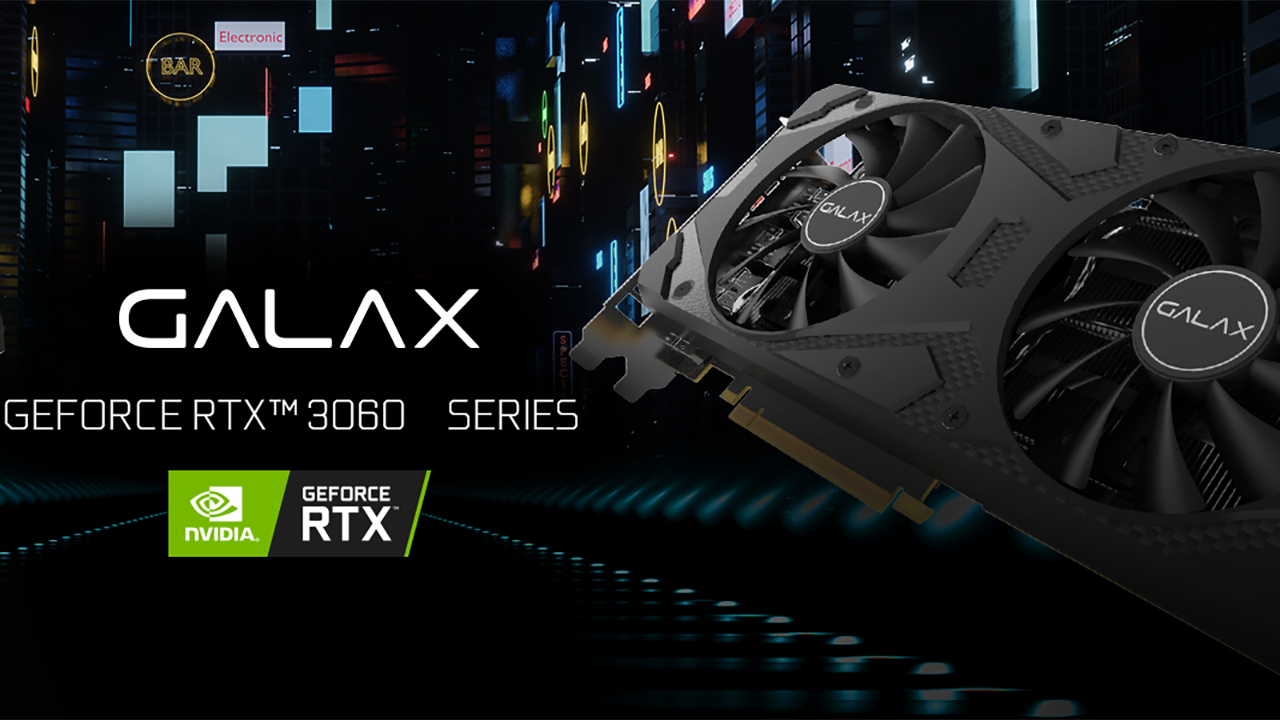Report: Galax Preps GeForce RTX 3060, 3060 Ti With Cryptomining Limiters
Galax is reportedly readying more GeForce RTX boards with limited hash rates.
Palit Microsystems, which owns Galax, Gainward and KFA2, is reportedly working on a range of GeForce RTX 30-series graphics cards that feature cryptocurrency mining limiters which severely degrade the financial viability of using the cards for mining. Last week, we learned that Palit was prepping GeForce RTX 3070 and 3080 graphics cards with limited hash rates (LHR), and this week VideoCardz reported that the GeForce RTX 3060/3060 Ti LHR boards are also on the way from Galax.
The new Galax GeForce RTX 3060/3060 Ti For Gamers boards will be based on Nvidia's LHR GA106 and GA104 GPUs featuring new IDs and paired with appropriate firmware, according to VideoCardz, which cited Galax as its source; however, the cards aren’t currently listed on the vendor’s site.
Palit's FG-series GeForce RTX 3060 will reportedly carry 12GB of GDDR6 memory with a 192-bit interface; whereas, the GeForce RTX 3060 Ti will come with 8GB of GDDR6 memory with a 256-bit interface. Both will be equipped with custom triple-fan cooling systems, but their clock rates will be in line with Nvidia's recommendations: up to 1,777 MHz for the RTX 3060 and up to 1,665 MHz for the RTX 3060 Ti.

Unofficial reports claim Nvidia is quietly rolling out its existing graphics processors with cryptomining limiters enabled by a combination of a new GPU ID, firmware and driver. In particular, it is expected that Nvidia's lineup of crypto-limited graphics cards will include both existing and new models, such as the RTX 3090 (GA102-302), RTX 3080 Ti (GA102-225), RTX 3080 (GA102-202), RTX 3070 Ti (GA104-400), RTX 3070 (GA104-302), RTX 3060 Ti (GA104-200), RTX 3060 (GA106-302), and GeForce RTX 3050/3050 Ti.
There is a good reason why Nvidia and its graphics card partners reportedly want to deny usage of GeForce GPUs, some of the best graphics cards for gaming, for cryptomining. Mining obviously uses a GPU at around 100% load 24/7, something that a chip for a client PC is not meant for. As a result, failure rates because of mining are almost guaranteed to be growing.
Keeping in mind that Nvidia controls over 80% of the market of discrete desktop graphics cards selling around 9 million GPUs per quarter, increased failure rates would clearly hit the company and partners badly. Just 1% of 9,000,000 is 90,000 RMA cases, and makers of graphics cards (and possibly Nvidia itself) may not be ready to process an overwhelming number of RMA cases in a timely manner. Still, very few GeForce RTX LHR graphics cards have been officially announced so far.
Get Tom's Hardware's best news and in-depth reviews, straight to your inbox.

Anton Shilov is a contributing writer at Tom’s Hardware. Over the past couple of decades, he has covered everything from CPUs and GPUs to supercomputers and from modern process technologies and latest fab tools to high-tech industry trends.